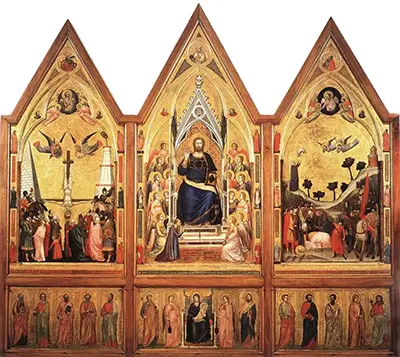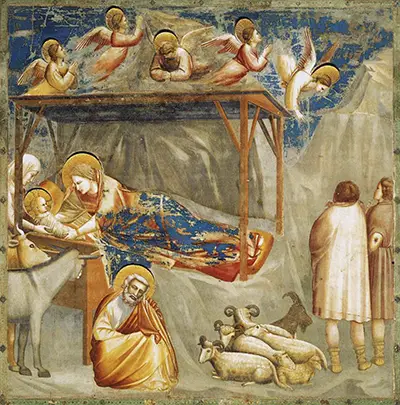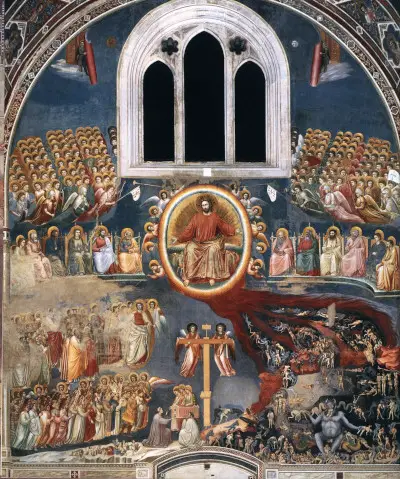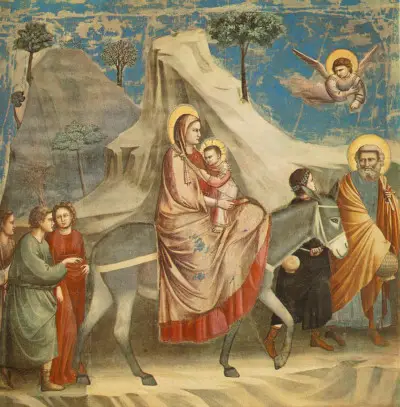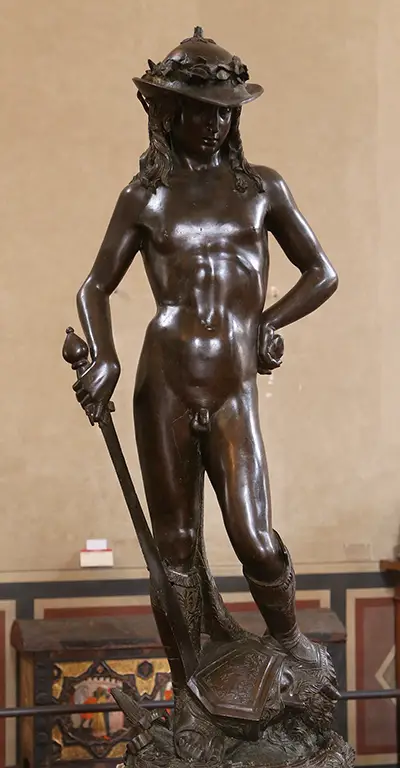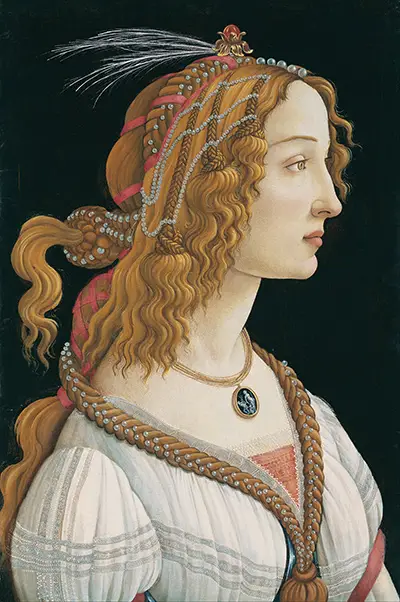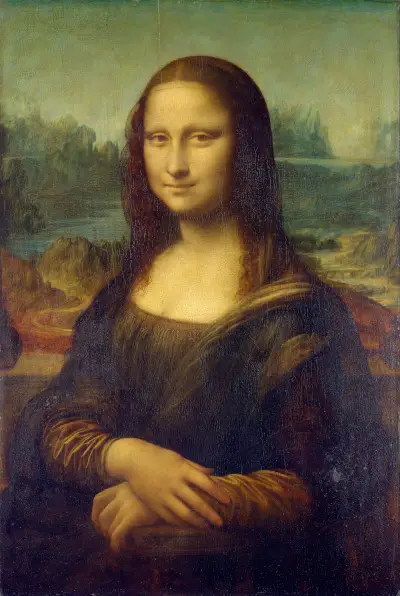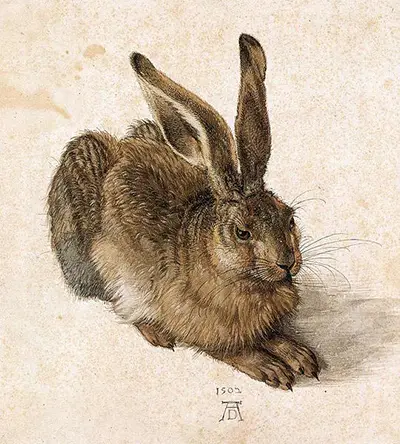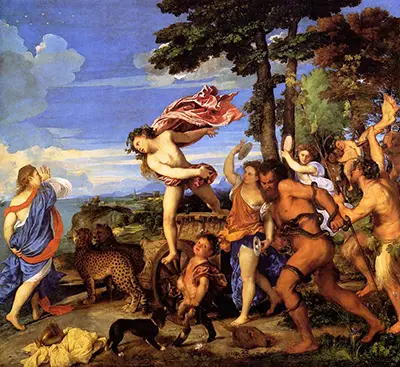Giotto drawings are hard to find - in order to illustrate his abilities within this medium, it is necessary to bring together short anecdotes and opinions from a variety of sources.
Giotto's Natural Drawing Ability - Creating his Perfect Circle
Pope Boniface VIII famously awarded Giotto a commission after the artist had applied for the work by simply painting a circle on a piece of paper. Many might not understand such a simple scrawl, but the Pope spotted the artist's ability to draw a perfect circle without any aids, and agreed to give him the work as a consequence.
[Giotto] immediately took a sheet of paper, and with a pen dipped in red, fixing his arm firmly against his side to make a compass of it, with a turn of his hand he made a circle so perfect that it was a marvel to see it.
Giorgio Vasari
Drawing as a means to helping Assistants
Giotto was unable to keep up with the work that he took on, and employed highly skilled assistants to help him out. Giotto realised that by drawing and painting outlines of his ideas, he could better lead his assistants who would then take on the less important parts of each composition. This is termed under painting, but could also be done using drawing techniques and some of Giotto's original work can still be seen under the layers of paint which were applied over the top.
The nature of his paintings, as frescoes, meant that the artist had to move quickly. Some of his work would need to be completed within a day, as the plaster dried. He would therefore draw out his ideas and allow his assistants to work quickly, before perhaps applying the final touches himself. Without his planning phase, there would be too many variables for the assistants to meet his requirements within the available time.
During the time of Giotto drawing would often be completed with pen and ink, with charcoal and chalk also used as an alternative. Much would depend on the purpose of each sketch, and whether it was intended to be a study or preparation for a later painting, or a standalone artwork capturing something from the natural world.
Talented Draughtsman
Giotto was found sitting outdoors, sketching items from real life in a manner which had fallen out of favour in previous centuries. Fellow artists were shocked by the precision and lifelike nature of his work, and realised that this natural talent could be developed into other mediums, such as architecture and painting. Indeed, for many centuries no painter was deemed worthy of respect unless they had already mastered the basic techniques of drawing, particularly in Italy.
Whilst wandering around the Italian countryside, drawing local farmyard animals and other elements of nature, Giotto was spotted by Cimabue, who would later become his master. The latter was surprised and impressed by the qualities of his sketching and immediately encouraged him to join his studio, where Giotto could learn other mediums and hone his impressive natural ability.
This chance meeting was key to Giotto's artistic influence which would help bring about the early stages of the Renaissance, as well as helping to bring lifelike drawing back into mainstream Italian art, after it had been sidelined for several centuries.
Remaining Giotto Drawings
All the available evidence teaches us of Giotto's skills as a draughtsman yet unfortunately there are not really any artworks left due to the fragile nature of his work in this medium. For a simple sketch to last from the time of Giotto all the way to today has just proven too tough a challenge for all of the study drawings that no doubt he would have completed during his own lifetime.
Influence on Renaissance Drawing
Having renewed interest in lifelike drawing, it could be said that without the influence of Giotto, as discovered by Cimabue, we might never have seen the drawing qualities of the likes of Michelangelo and Leonardo. Drawing had already become fashionable once more, and they became motivated to explore techniques that might raise the bar once more.
Giotto was also interested in elements from normal life, and whilst most of his paintings were based on religious themes, as requested by his donors, he perhaps reminded later artists of the qualities to be found in every day life, and how they could also inspire some breathtaking art.
Portrait of Giotto Drawing
The photograph included on this page is from a large Christies sale entitled Victorian, Pre-Raphaelite and British Impressionist Art. It is a portrait drawing of Giotto by Simeon Solomon in the late 19th century as a sign of respect and love for an artist who achieved so much many centuries earlier.
More Renaissance Artists




 Giotto.jpg)
 Giotto.jpg)
